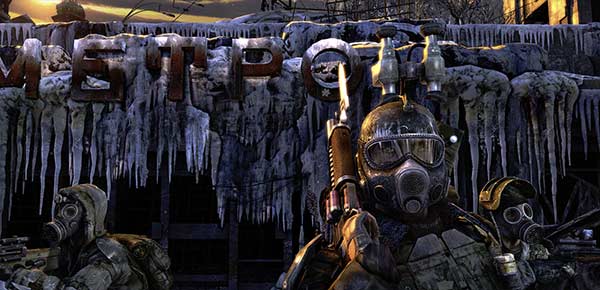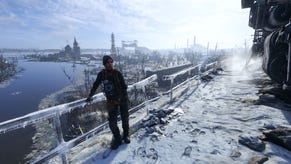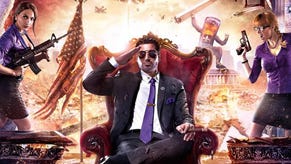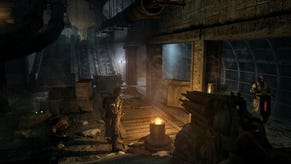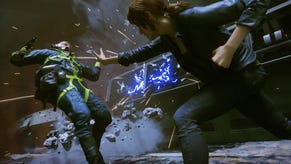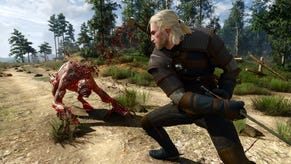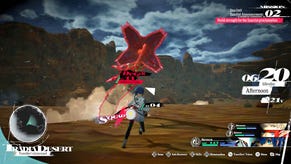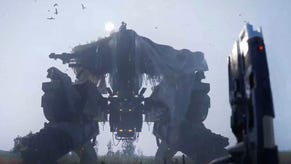On Rails: Hands-On With Metro 2033
Hey! Stop that, you've got it wrong: this is not Stalker by another name. In fact, it's not Stalker to the extent that, were you to say "Is this like Stalker?" to one of the ex-Stalker developers behind it, they'd probably punch you in the the nose, walk to the top of the nearest mountain and then scream in raw fury at the skies until someone shot them up with enough tranquilisers to knock out a blue whale. It's very determinedly not like Stalker, and I can't imagine how many times the poor dears have had to bat away the same questions and presumptions. Metro 2033 is a post-apocalyptic shooter set in mutant-strewn modern Russian, but it's not open-world survival fantasy. It's a strictly linear first-person shooter, albeit with a touch of shopping and soaking up the atmosphere of civilian settlements in between dealing death to things that go bump in the subterranean perma-night. It's Half-Life, it's Bioshock, it's Call of Duty - it's anything but Stalker.
What it most evokes, I think, is Cryostasis with an enormous budget - a similarly ominous trek through a dead world, broken up by irregular, startling bouts of extreme violence. It's more determinedly an action game than that, with puzzling kept to a bare minimum while enjoying dramatically superior production values and pacing. There's definitely a commonality in terms of how it approaches environment-as-horror. It's something to do with making the game's world and atmosphere so intrinsically devoid of life and human hope - kind of like visiting Reading - that injecting the openly fantastical into it feels entirely convincing. The mutants and ghosts don't need rationalisation here. In a world this dead, this hostile, it only makes sense that they're there.
It is a story of humanity nonetheless, not simply a journey into nothingness. You play as a young chap called Artyom, who was born just before the nuclear holocaust hit. 20 years later, he and what's left of Moscow's population dwell in the tunnels and stations of its underground system, carving out a sad life of subsistence and violence, and divided into warring factions. The pacifists, the communists, the neo-Facists... Each have their own territory, with their own laws.
There's no overall ruler, just surly tolerance between some of these tribes, and open hostility between others. Your journey takes you through the zones and stations occupied by the more dangerous, extremist Metro tribes, unsurprisingly - and into the mutant and ghost-ridden tunnels that link them. And, on occasion, onto the frozen, lifeless world above - an oddly beautiful but palpably awful scene, like a Christmas card from a deathcamp. There's no human life there, but there are Marie Celestian scenes - an office with a PC still at every desk, a train station whose intact electronic ticket barriers will never again feed on cardboard rectangles. Such things are of no use to the stark world below, and so they remain on the beast-roamed surface.
I played, for the record, around two hours of Metro 2033 - during that time, it was unfailingly good-looking, most especially in the civilian hub segments. While there's no real interaction to be had with any of the dishevelled populace, there's an impressive amount of incidental detail, stuff that doesn't strictly need to be there but which makes the world so much more convincing because it is. The pens full of unhealthy-looking pigs, the arguing couples, the bleak, sweaty kitchens, the jerry-rigged machinery for lighting, warmth and transportation... It's perhaps the benefit of the source material being a novel (out in English in March), something that has already laid out how this grim society functions: in these sections, it feels like a real place. Imagine Rapture if it had avoided anarchy but plunged headlong into poverty -an enclosed, subsistent populace making the best of the little they've got.
It is a shame, I can't help but feel, that 4A have created so much but allowed only the most token interface with it. There are weapons and weapon upgrades to be bought (neatly, the currency is bullets - a scarce commodity in this claustrophobic world) and some lost souls will spit out a bleak bon mot if you hit Use on them, but other than that these areas exist purely to create context. This isn't a shooter with RPG elements. It's a shooter. But it's a shooter with imagination, with a strong sense of place and journey - Bioshock and Half-Life 2 are sturdier touchstones than, say, Modern Warfare 2.
It's not purely Put The Crosshair On The Man/Monster's Head - occasional stealth missions involve sticking to the shadows, and avoiding noise-maker traps such as cans on strings and broken glass underfoot. It's always possible to blast your way through like a traditional meat-grinder FPS hero, but it's a slick and appealing approach to creeping around. The interface helps - no health meters, ammo counts or magic radars, but instead everything monitored via your character's watch and notepad/map. Ammo is visible on and around your gun, so you need to keep an eye on that to tell if you're running low - which you will be, all the damn time. It's not an especially high body-count game in the grand scheme of digi-killing, but even so you need to be exceedingly careful with the bullets you find. There's some things you really don't want to be trying to take down with a knife.
As mentioned earlier, bullets are also money in Metro's resource-starved settlements, but slightly confusingly there's a distinction between valuable, military-grade ammo and the less effective homemade stuff. I'd have thought it would have been better to have one general pool, but perhaps that's proved untenable in QA. Now, you have the choice between, say, loading your shotgun with shells that can take down a giant rat-thing fast, or of having at it with several, low-grade shots and saving the good stuff to trade in for a weapon upgrade - such as a stock or silencer. Sometimes, you won't have a choice, finding yourself out of everyday ammo and being forced to shoot your precious money into a Neo-Nazi's eyeball if you want to survive. It's an interesting mechanic, even if it seemed slightly muddled during my time with the game.
Another precious, curious resource was gas mask filters, necessary to keep your lungs from having a funny turn when traipsing through gas-filled areas and the great and terrible outdoors. Overuse detoriates these filters, lessening the amount of time your good air supply lasts for, so scavenging and trading for them is an important, but also scattily-explained, part of survival. Oh, and the mask's glass screen can crack too, so remember to take it off when it's not needed - i.e. whenever something big, hairy and carnivorous launches itself claws-first at your tasty face-flesh.
The effect of the general shortage of resources makes Metro 2033 a little hard to call for now - at times, my situation felt as desperate and urgent as it should in such a damaged world, but at others just a little frustrating. There's an awful lot of scripting and it's all checkpoint-based, meaning there can be a fair bit of grueling repetition if you hit a tricky stretch, and even the occasional punishing instant death situation. A monster popping up in exactly the same place every time can mess up the they're-coming-outta-the-goddamn-walls vibe, but hopefully the regular pinging between out-and-out action, stealth, hallucinatory spooks and on-vehicle Alamo moments will keep it sufficiently varied.
I was particularly taken with the spectral elements, the things you can't fight - the ghost train rushing by you that's just headlights, windows and thunderous noise, the shadowy silhouettes of doomed army's ghosts, the shadowy echo-memory of a long-limbed beast chasing down a child screaming for its mother... There a Stalker comparison is apt - such moments are reminiscent of the unsettling, displacing psychic attack scenes, where reality and hallucination bled into each other. Given the plot involves Artyom's journey to best/understand the murderous psychic mutants called the Dark Ones, I'm pretty sure we're in for many such haunting vignettes.
What stands out the most, though, is how lavish it is - the creepy lighting, the impressively there sound design, even the writing and (English, but Russian-accented) voice acting. I'd expected the worst of those latter, but in what I saw it doesn't suffer from the all-too-common problem of inexpert translation. That said, I was told there'll hopefully be an option to play with Russian dialogue and English subtitles. It's not been confirmed yet, but I really hope it makes it in -it'll further ramp up the otherworldly menace of the thing, the sense that you're journeying through the unknown, something that isn't the standard Western shooter-world. In a lot of ways, this stomp down a deadly trainline is incredibly traditional, but, going on the presentation, it's going to be an on-rails journey well worth making.
It's not Stalker. I mean, it even has women in it.
